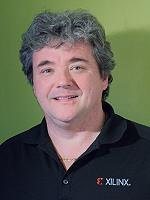DSP was once seen as the ‘best thing since sliced bread’. But it seems to have declined as a standalone technology. Is there still demand for discrete DSPs and, if so, who is using them?
Who better to ask than DSP pioneer Texas Instruments? Ramesh Kumar, worldwide business manager for multicore and media infrastructure DSP, said: “While we have seen a trend of embedding DSP technology in SoCs, there still is a large market for standalone DSPs. This is why TI continues to invest in DSP technology, as well as in SoCs that combine DSP and ARM Cortex cores.
“For example, within the last two years, TI has expanded the TMS320C55x DSP family and is continuing to see advantages for low power DSPs that enable always on applications.”
Richard Kingston, VP of market intelligence with IP licensing company CEVA had a slightly different view. “We embrace the move towards embedded DSPs in the last few years,” he said. “Most traditional ‘discrete DSP’ vendors stopped developing DSP architectures a while ago, so the market opportunity is greater than ever.”
But he was keen to point out that the need for DSP hasn’t diminished. “The need and use cases for DSP now are greater than ever,” he contended. “Think about DSP as the technology that bridges the analogue world in which we live to the digital world of our devices. While the demand for discrete DSPs in consumer markets is diminishing, the actual use of embedded DSPs continues to grow unabated.”
Another company with a slightly different view of DSP is FPGA vendor Xilinx. Oliver Tremois, EMEA DSP specialist, noted: “The simple answer is that companies with a significant investment in DSP code – C/C++ – see benefits in continuing to take advantage of that investment, avoiding the perceived risks associated with learning how to use a different type of platform, such as an FPGA with DSP extensions.”
Who is using DSP?
So, with the consensus that DSP is still needed, if not in discrete format, where are the applications?
“Applications that need relatively low performance floating point processing, such as audio systems with a small number of channels, or simple single axis motor controls, are well handled using a DSP,” said Tremois. “Suitable algorithms for motor control, for example, are proven and readily available.
“However, if multiple DSPs are needed – for multiaxis automation or multichannel professional audio, for example – the case for using standalone devices becomes weaker. To give a practical example, Xilinx recently helped a customer redesign a processor board featuring 32 DSPs for a radar system. Using the wider I/O bandwidth and high performance DSP slices, this was done using two FPGAs.”
CEVA’s Kingston noted: “In consumer, there is wireless baseband processing for smartphones and infrastructure; audio/voice processing for any device that you want to control with voice commands; and vision processing, which is going to be a staple of any consumer device with a camera.
“In the IoT, DSP will be a key technology for Low Data Rate LTE and LPWAN standards to ensure low power and flexibility to support multiple standards in a single device. In automotive, vision DSPs are the underlying technology for object detection and recognition in advanced driver assistance systems (ADAS). And V2X communications use DSPs for baseband processing.
 |  |  |
| Ramesh Kumar, Texas Instruments | Richard Kingston, CEVA | Olivier Tremois, Xilinx |
| "TI (continues) to see advantages for low power DSPs that enable always on applications." | "The need and use cases for DSP are now greater than ever." | "Any rumours of the DSP's death are exaggerated." |
“Apart from the inherent programmable nature of DSPs, which leads to differentiation, the power efficiency gains from using DSPs – where they are more suited than GPUs and CPUs – cannot be overlooked.”
Kumar pointed out that DSP technology can be beneficial wherever programmable and power efficient computing is needed. He echoed Kingston’s view regarding voice recognition and ADAS, adding that many traditional applications still suited DSPs, including home and professional audio, energy grid infrastructure, defence and medical.
But why would someone buy a discrete DSP? Kumar: “DSPs still provide significant benefits in system efficiency for programmable computing compared to other general purpose computing architectures. System efficiencies are seen to include overall power consumption, board size and system cost. Compared to FPGAs, DSPs continue to provide simpler and easier programming and updating, while offering more flexibility. We are also seeing modern DSP architectures supporting the latest programming models, such as OpenCL and OpenMP providing developers scalability.”
You might expect an FPGA vendor to point to its own technology, but Tremois said: “Designers have, for some time, been able to choose Digital Signal Controllers for applications that need a combination of signal processing and conventional control processing. Popular ARM cores also integrate DSP extensions and floating point hardware, as do FPGAs and platforms such as Zynq UltraScale+, which combine ARM based processing, FPGA hardware programmability and dedicated DSP slices.”
According to Kingston, CEVA doesn’t see too many catalogue DSPs being used in consumer applications any longer. “Even infrastructure,” he added. “Base station OEMs are now designing ASICs with embedded DSPs, replacing the older systems that featured DSPs.
“These ASICs are smaller, more powerful and cheaper than traditional DSPs and enable a more modern base station design that is easier to maintain.”
Driven by integration
Integrating DSP functionality into a platform has its benefits, at least in Tremois’ opinion. “A more integrated solution is an obvious advantage. Designers are increasingly interested in the performance opportunities offered by solutions based on an FPGA or an all programmable SoC.”
He pointed out that the combination of high performance processing, plus programmable logic, on one chip also helps to reduce system power consumption. “The performance advantage is partly associated with the opportunity for massively parallel processing; extremely high performance is now available – in the region of 10TMAC/s,” he added.
Kumar suggested that, because developers have the ability to select from a broad range of DSPs, they can choose the device that best suits their needs. “For example, the TI portfolio scales from sub 100mW TMS320C55x devices to eight core TMS320C66x devices with more than 100GFLOPS of computational capacity, offering a diverse portfolio for scalability.”
Kingston also pointed to design flexibility and integration benefits. “Open programmable DSPs in embedded systems gives DSP users a lot of flexibility with their products and designs. In the vision market, for example, customers who integrate a vision DSP into their SoC design can repurpose the same silicon to address different markets by changing the software that runs on the DSP – it could address the surveillance market via face detection or be used as an aftermarket dashboard camera. This flexibility ensures that customers have a better chance of success.”
Picking up on the integration theme, Tremois added: The combination of a DSP and FPGA has been commonplace for some time, particularly where interfacing requirements are extensive or complex; the DSP simply does not have this type of connectivity. Similarly, applications that require high rate A/D or D/A converters – necessitating the addition of discrete ICs or an FPGA – expose the limitations of traditional DSPs.”
Where is DSP headed?
DSP pioneer TI sees a future for the technology, with Kumar noting a broader choice of single and multicore parts.
“TI can also see DSPs heading towards a 64bit architecture, as well as vector processing and multicore coherency,” he continued. “It will be interesting to see how targeted libraries for end applications potentially impact the DSP industry.”
But the other contributors see embedded DSP as the way to go. “Embedded DSP platforms, particularly FPGAs and all programmable SoCs and MPSoCs, have raised the bar in terms of signal processing performance, I/O bandwidth, power efficiency, systems integration, and, of course, flexibility,” said Tremois. Nevertheless, Xilinx expects to see higher performing multicore DSPs appearing as developers look to keep up with the performance of platform devices. “But this will be at the cost of increased programming complexity,” he cautioned.
Kingston believes DSP is experiencing something of a renaissance – whether you call it a DSP or not. “But a ‘general purpose’ DSP is no longer good enough for most applications. CEVA has three DSP architectures to address the three end markets where it sees most need – communications, vision and audio/voice. One size doesn’t fit all in the DSP world any more.
“CEVA believes the DSP will be the third processor inside every applications processor as it’s the only way to handle advanced vision based processing or ‘always on’ functionality efficiently.”
A future for standalone parts?
It’s no surprise to find out that TI sees a future for DSP. “We believe there is a future for DSP centric devices,” said Kumar, “whether they are truly standalone DSPs or parts which include, say, an ARM processors for board level benefits.
“TI continues to invest along these lines and will continue to offer a wide portfolio of standalone DSPs and DSP centric devices.”
Kingston wasn’t entirely sure. “Perhaps there is still a market for software defined radio DSPs used by the military and maybe catalogue DSPs for some industrial applications. But many of the traditional markets in which standalone DSPs were commonplace have moved on.”
Tremois noted: “Currently, the DSP has a place in simple, low performance systems that rely on standardised hardware accelerators, although this will increasingly become threatened by embedded platforms such as DSP extended microcontrollers. Low cost FPGAs, such as Xilinx’ Spartan family, also offer a competitively priced alternative for those applications requiring limited integrated DSP capability.
“But Xilinx expects to see standalone DSPs becoming increasingly unable to satisfy all requirements. Meanwhile, new tools are arguably removing the last practical barrier for engineering teams who see future system performance demands moving beyong the limits of current DSP architectures.
“However, any rumours of the DSP’s death are exaggerated,” he concluded.












